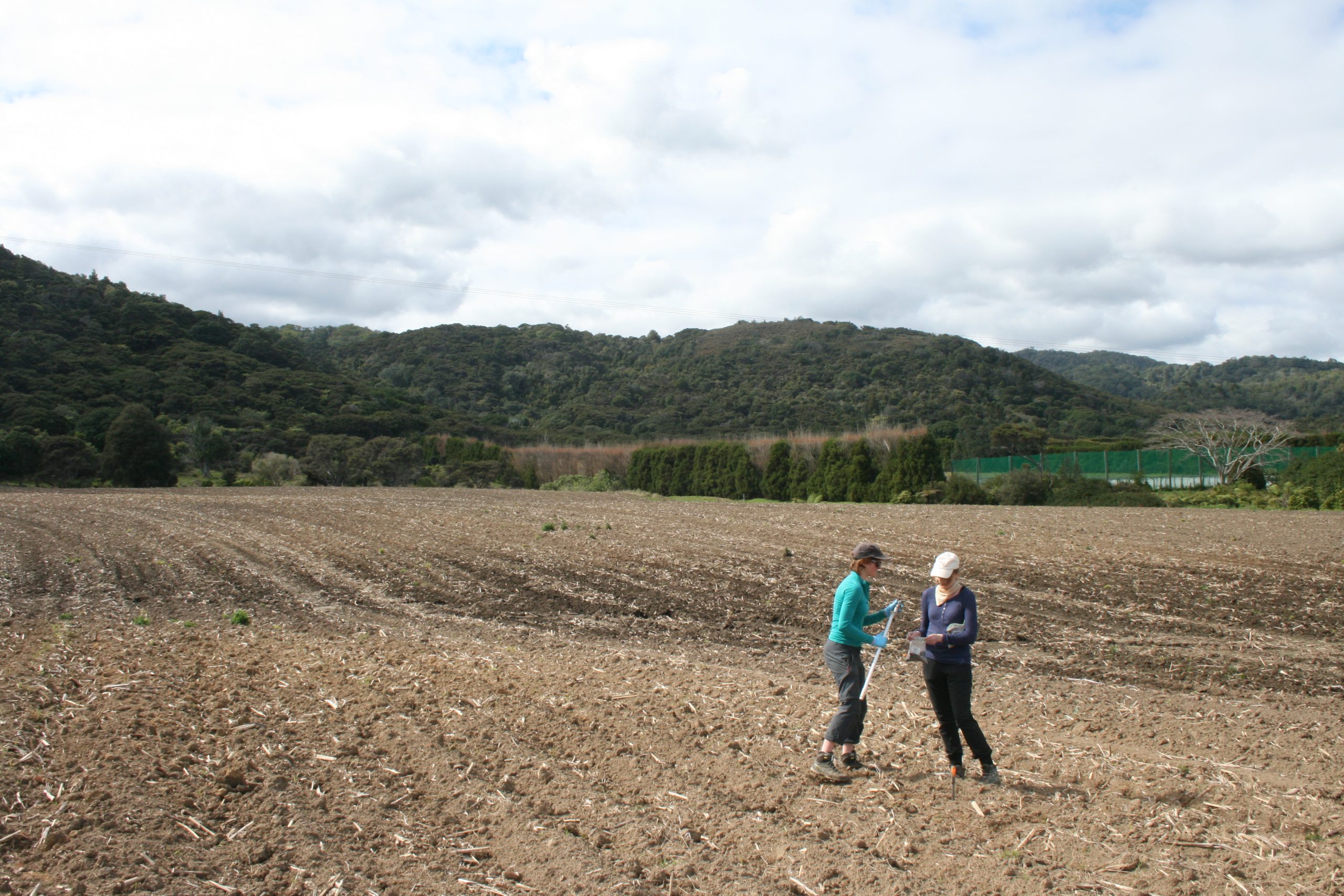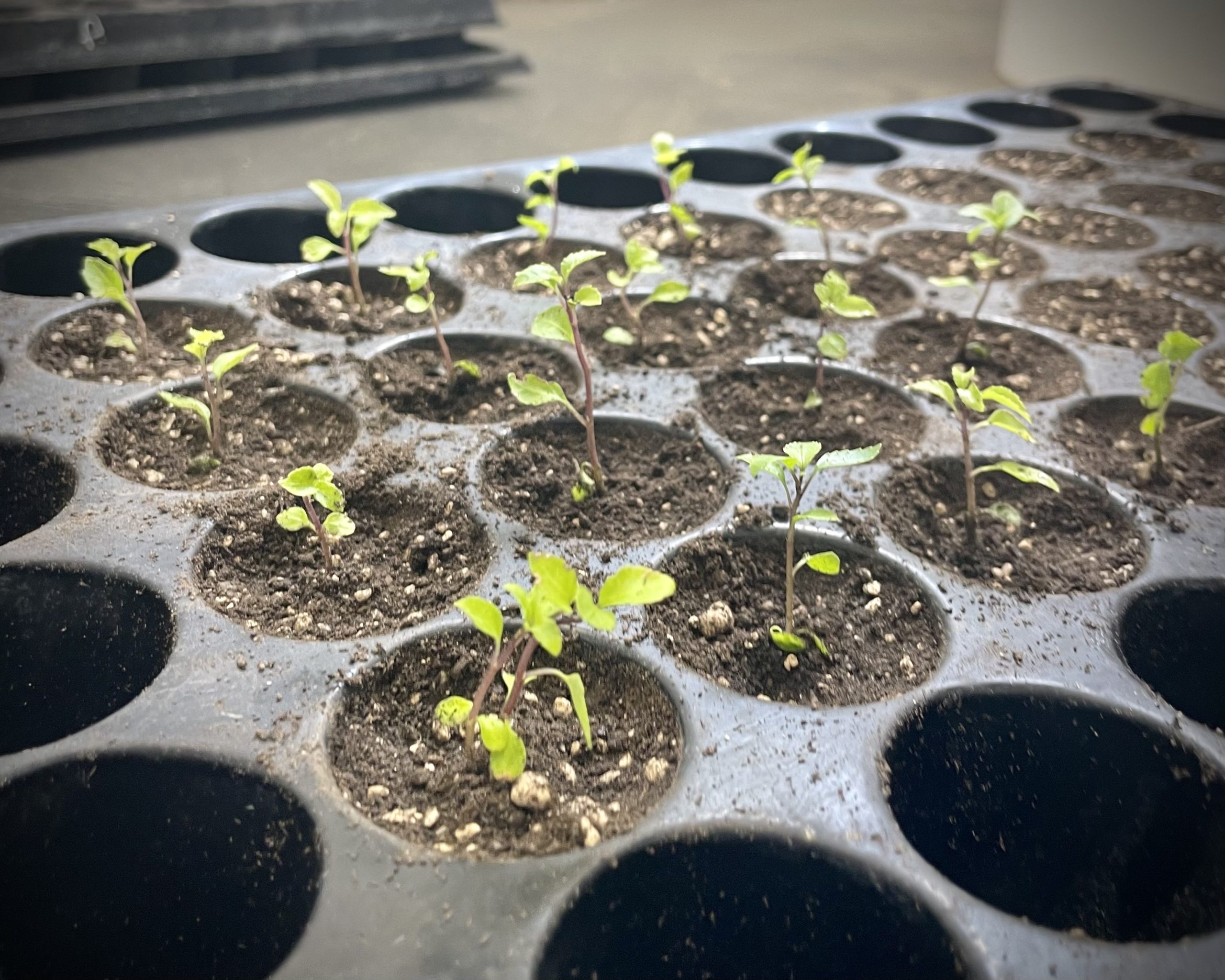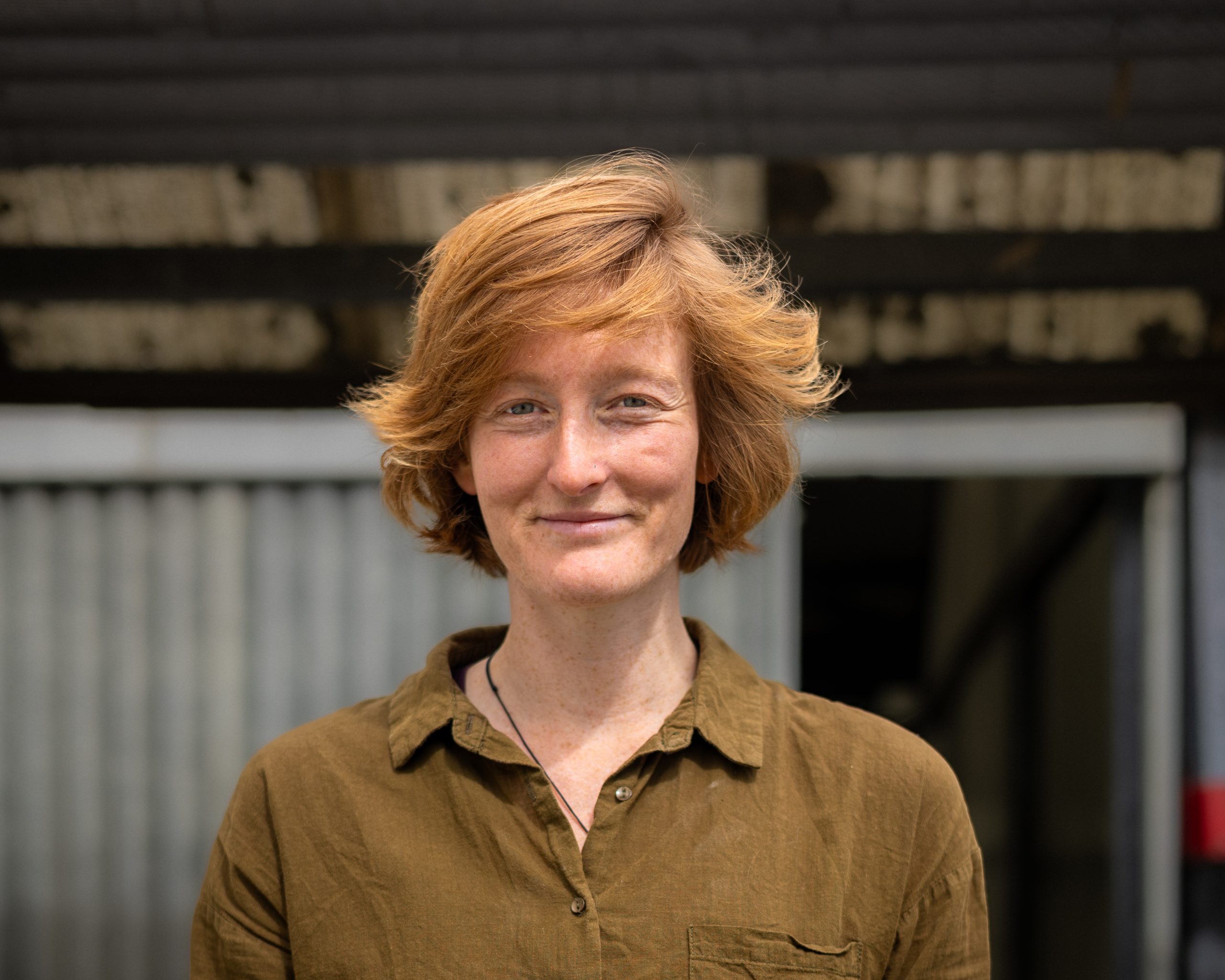27 March 2023

PHD Student Fionnuala Bulman, sampling soil with a soil corer
PhD Student Fionnuala Bulman (known as Finn to her peers) has a background in medical microbiology, but her passion for the outdoors and interest in the natural world motivated her to make the leap from biomedical to environmental research.
Taking up a PhD with Bioprotection Aotearoa, Finn is investigating how land-use shapes Arbuscular mycorrhizal fungi communities and how these communities are linked to the resilience of natural and managed ecosystems in New Zealand.
Arbuscular mycorrhizal fungi (AMF) are microbes that colonise the roots of terrestrial plants, forming structures that look like ‘little trees’ inside root cells, and extend microscopic fungal threads called mycelium out into the soil.
They form a mutually beneficial relationship, providing plants with nutrients from the soil, and receiving carbon generated by the plants through photosynthesis. Soil structure is also improved by the network formed by fungal mycelium, resulting in increased water-holding capacity and gas exchange.
Research in this fungal network has become a hot topic in recent years, with scientists working to advance understanding of the diversity of AMF species, their function in plant-soil ecosystems, and the hidden underground networks they form.
Finn’s field work is located in Te Kaha, the Bay of Plenty. It’s a relatively small area with a variety of land uses present. With maize fields and kiwifruit orchards patch worked across the landscape and bordered by native bush, it’s an ideal site to conduct this research
By collecting soil samples from these three distinct ecosystems, and comparing the diversity of AMF species found in each, Finn is hoping to identify how land-use shapes AMF communities.
“Studies have shown that mycorrhizal fungal communities can change significantly across space and time. Samples taken even a meter apart can contain very different fungal species and the same site sampled in winter and summer may also show very different communities” says Finn.
Agricultural systems, management practices, weather events, and seasonal changes can all potentially influence what happens below ground. As such Finn is using a structured sampling system across the Te Kaha landscape, to capture some of this spatial variation for each ecosystem (18 in total). She is also sampling quarterly to incorporate some seasonal variation into the sampling.
With this method, Finn hopes to build a more comprehensive picture of the AMF species present in Te Kaha ecosystems and any changes within the AMF communities between seasons.
This first phase of Finn’s research project will then determine whether AMF communities are affected by human input such as agricultural management practices or if natural changes in conditions such as seasonal weather patterns actually drive these shifts.
“Are the AMF communities stable or are there big shifts that line up with human management, such as annual planting and harvesting of maize? How does this compare to the effect of pesticide application in kiwifruit orchards or the relatively undisturbed native forest?” Finn queries

Māhoe seedlings, a native plant found throughout the forest in Aotearoa New Zealand
The second phase is to inoculate plants with the AMF communities collected in Te Kaha and expose these plants to conditions that model future climate- change scenarios, involving higher temperatures and higher CO2 levels. Host plants include the Bruno-Hayward variety of kiwifruit, a silage maize cultivar currently grown in Te Kaha and māhoe, a native plant that is found throughout the forest in Aotearoa New Zealand.
Finn hypothesises that AMF are important for plant resilience and therefore plants inoculated with AMF will cope better with these conditions. She hopes that this information can support agribusiness in Te Kaha to make informed decisions about the future of their whenua, for example future land use and management to promote resilient soil and plants.
The data that Finn collects from her sampling in Te Kaha will also contribute to a global project aiming to map mycorrhizal fungal networks world-wide. SPUN (Society for the Protection of Underground Networks) is a recently founded research organisation, on a mission to advocate for the protection of mycorrhizal networks. “I really support that kaupapa” says Finn “as once we know what’s there and can prove it is important on an ecosystem scale it becomes much easier to push for policies to protect what we have”.
After reading about the project in a news article, Finn wondered what sort of methods they would be using for sampling and was encouraged to reach out to Dr. Toby Kiers, the Executive Director & Chief Scientist of SPUN.
“She’s very well-known in mycorrhizal research” Finn shares “and so I was surprised to quickly receive a reply and guidance from Toby herself. It was lovely to realise that there was this network of support and opportunity for collaboration with scientists who were willing to invest time into answering the questions of an early career researcher like myself”.
As a result of these conversations, Finn is using methods similar to those developed by Toby and her team and therefore the data she produces will be comparable with that of other contributors around the world.
“Hopefully, the data that I provide will be a useful contribution to the global database on mycorrhizal diversity. Alongside my own PhD work, I’m really excited to see how that project and whole movement of mycorrhizal research progresses in the next few years – it’s an exciting time.”

